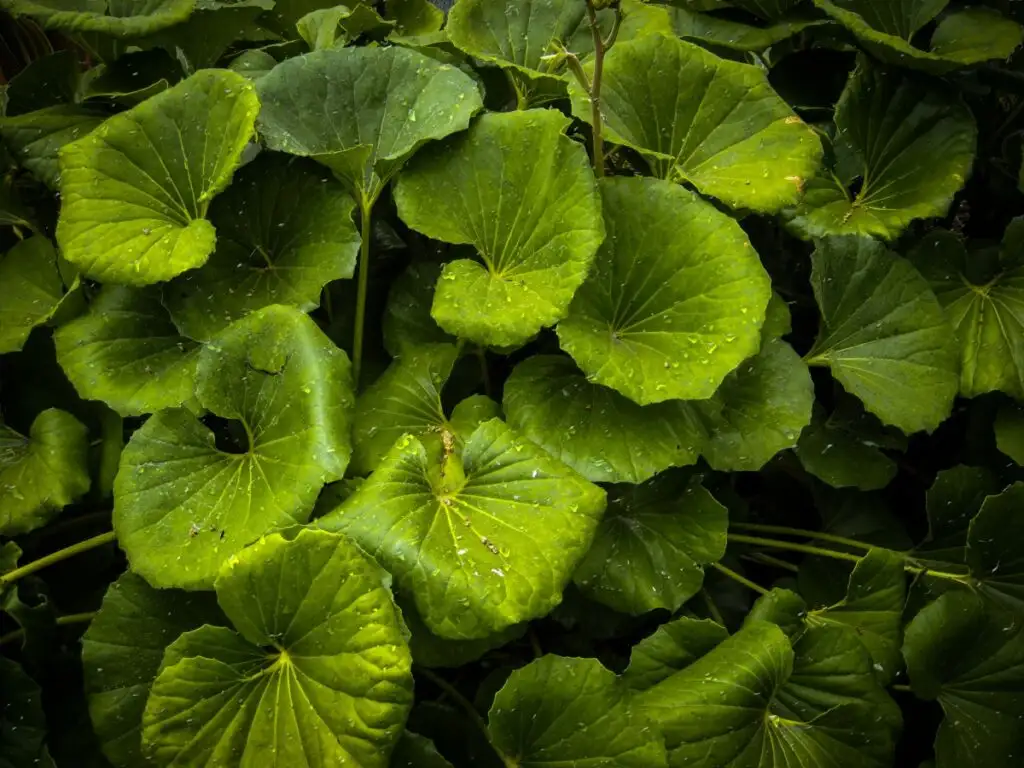Centella asiatica
Latin Name: Centella asiatica
Herb Class/Action: Nerve and Connective Tissue Tonic, Rejuvenative, Alterative, Nootropic
Parts Used: Aerial parts: leaves and stems
Flavors: Bitter, pungent, mildly astringent and sweet
Energetics: Cooling to neutral, tonifying
Traditional Benefits: Supports the natural healing process, skin support, musculoskeletal support, brain support, circulatory support, memory support, support’s the natural aging process
A favorite leafy green of elephants in Sri Lanka (who are of course, known for their stellar memory), Gotu Kola is a powerful herb that supports brain health and cognition.*
A tropical plant native to India, East Asia, and parts of South Africa, the Gotu Kola plant (also commonly referred to by its Latin name, Centella asiatica) can be found growing wild in shaded areas near rivers and ponds. A common green vegetable, Gotu Kola can be eaten raw, cooked, or prepared as a juice (however, my teachers prefer a brain-boosting pesto!) It’s one of the most widely used Ayurvedic herbs—found in modern skin care formulations as well as supplements and teas.
Gotu kola has two prominent uses: when consumed internally, it helps support brain health and memory. When applied topically, it helps with skin rejuvenation and a healthy inflammatory response. Interestingly, both of these uses are reflected in the way animals interact with this restorative, regenerating plant.

We know elephants are known for their impressive memories…. and guess what one of their favorite foods is? Yep — Gotu Kola. As for topical uses, tigers will rub skin that needs some extra love and healing against Gotu Kola — earning it the nickname “Tiger’s Herb.”
With a leaf shape resembling the cerebellum, it’s no surprise that this herb has benefits for cognitive health. In Nepal, Gotu Kola is traditionally given to children in the form of creative recipes to help support their concentration and memory. Evidence supports the herb’s ability to modulate neurotransmitters (aiding in relaxation), support neural pathways, support overall nervous system health, and assist mental clarity and focus.*
In terms of the skin, Gotu Kola is commonly found these days in salves, balms, and creams. Studies show that Gotu Kola supports the healthy production and maintenance of collagen, making it useful for skin health as we age gracefully.*
“One of the great wisdom remedies” – Matthew Becker

